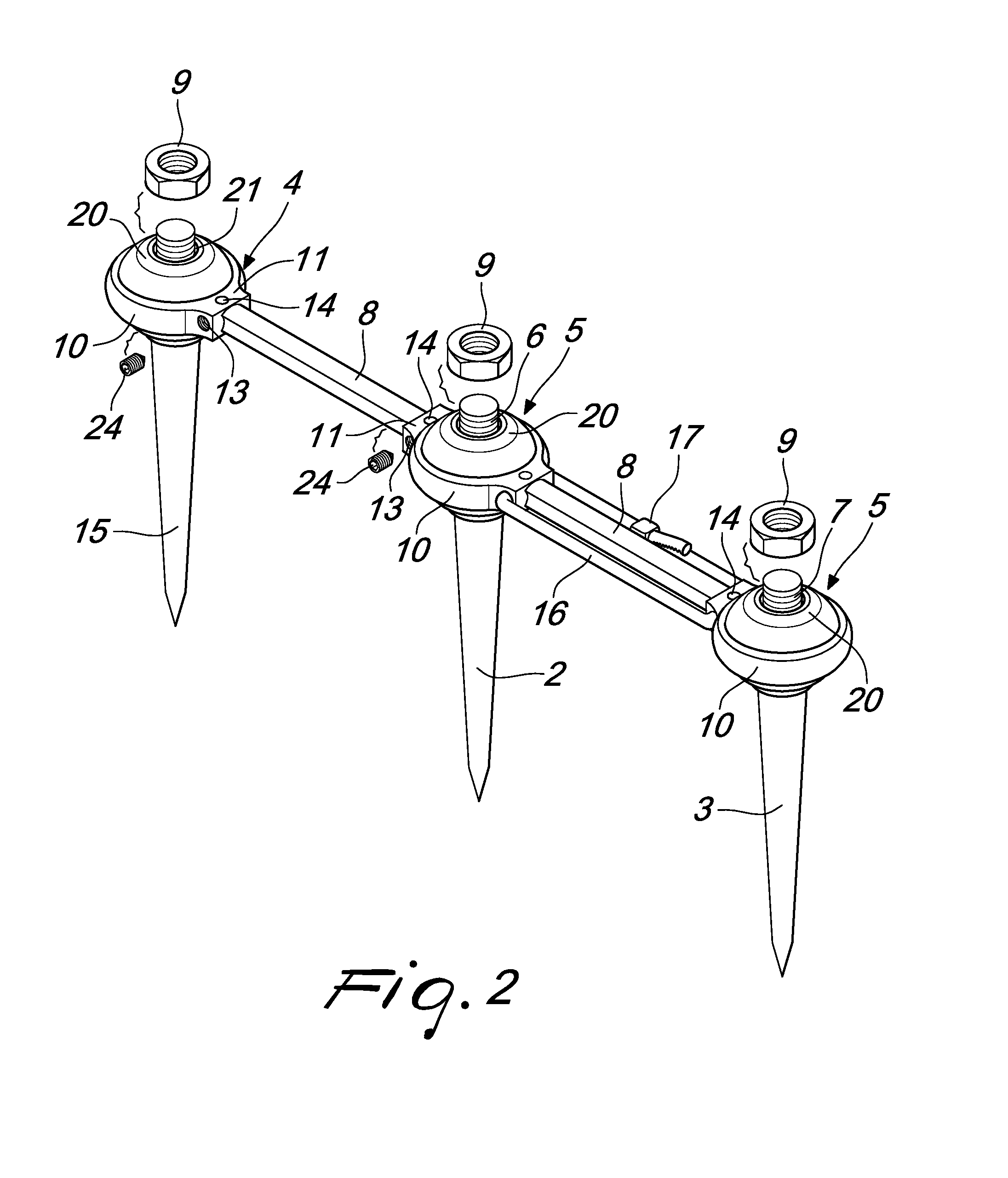Modular vertebral stabilizer
a stabilizer and vertebral technology, applied in the field of modular vertebral stabilizers, can solve the problems of inability to transmit diagonal forces difficulty in adjusting the position, and inability to allow a transverse connection between screws mounted on different vertebrae to transmit forces
- Summary
- Abstract
- Description
- Claims
- Application Information
AI Technical Summary
Benefits of technology
Problems solved by technology
Method used
Image
Examples
Embodiment Construction
[0021]With reference to the figures, a stabilizer device according to the present invention, generally designated by the reference numeral 1, comprises first and second means for engaging a first pedicle screw 2 and a second pedicle screw 3, which are adapted to be inserted in two adjacent vertebrae to be connected to each other for mutual stabilization.
[0022]The pedicle screws are conveniently headless and cannulated, so that they can be screwed into the vertebrae.
[0023]First engagement means, designated by the reference numeral 4, and second engagement means, designated by the reference numeral 5, are adapted to be fitted from above on a threaded portion 6 and 7 respectively on the first pedicle screw 2 and on the second pedicle screw 3. The first and second engagement means 4 and 5 are connected to each other by a rod-like element 8, of the bar type, which can be made of a rigid material, such as for example titanium, or of softer material, such as for example polyurethane, so as...
PUM
 Login to View More
Login to View More Abstract
Description
Claims
Application Information
 Login to View More
Login to View More - R&D
- Intellectual Property
- Life Sciences
- Materials
- Tech Scout
- Unparalleled Data Quality
- Higher Quality Content
- 60% Fewer Hallucinations
Browse by: Latest US Patents, China's latest patents, Technical Efficacy Thesaurus, Application Domain, Technology Topic, Popular Technical Reports.
© 2025 PatSnap. All rights reserved.Legal|Privacy policy|Modern Slavery Act Transparency Statement|Sitemap|About US| Contact US: help@patsnap.com



